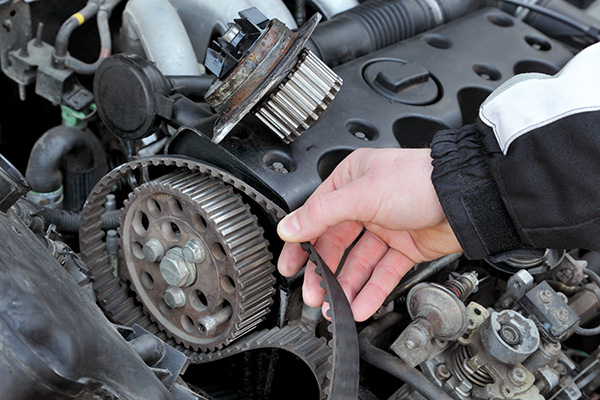
Ever wondered what the difference is between your car’s timing belt and serpentine belt? While they may seem similar, these two belts play very different roles in the overall functioning of your vehicle. Both are essential for keeping your car running efficiently, but they have unique functions and different levels of importance when it comes to maintenance. These are the key differences between the timing belt and the serpentine belt, so you know exactly how they keep your engine operating and what to look out for when it comes to replacement.
The Role of the Timing Belt
The timing belt is one of the most critical parts of your car’s engine. Its primary responsibility is to synchronize the rotation of the crankshaft and camshaft, ensuring that the engine's valves open and close at the proper intervals. This coordination is essential for the combustion process, which keeps your engine running smoothly.
The timing belt controls the engine’s "timing," meaning if it fails, the entire engine can suffer catastrophic damage. If the belt snaps or slips out of place, the pistons and valves can collide, leading to costly repairs or even engine failure. To avoid this, it’s important to have your timing belt inspected and replaced according to your car manufacturer’s recommended intervals, usually between 60,000 and 100,000 miles.
The Function of the Serpentine Belt
While the timing belt keeps the internal components of your engine in sync, the serpentine belt is responsible for powering a number of your car’s external systems. These include essential components like the alternator, power steering pump, air conditioning compressor, and sometimes even the water pump.
The serpentine belt gets its name from the way it "snakes" around multiple pulleys, driving several parts with one continuous belt. If the serpentine belt breaks or wears out, you’ll lose power to these systems, which can make driving difficult and uncomfortable. While the consequences of a broken serpentine belt aren’t as severe as a failed timing belt, it’s still crucial to replace it at the first sign of wear, such as squealing noises, visible cracks, or a loose fit.
Key Differences Between Timing Belts and Serpentine Belts
Understanding the main distinctions between these two belts can help you stay on top of maintenance and avoid unexpected breakdowns. Let’s explore their key differences:
Location in the Engine
The timing belt is located inside the engine, connecting the crankshaft and camshaft, while the serpentine belt is located on the exterior of the engine and drives various accessories.
Function
The timing belt controls the engine’s internal timing, making sure everything works in sync for proper combustion. In contrast, the serpentine belt powers external components like the alternator, power steering, and air conditioning.
Consequences of Failure
A broken timing belt can lead to severe engine damage, often requiring extensive and costly repairs. On the other hand, a broken serpentine belt will stop essential accessories from functioning but won’t typically cause engine damage.
Maintenance Intervals
Timing belts need to be replaced based on mileage recommendations, often between 60,000 and 100,000 miles, while serpentine belts can last longer but should be inspected regularly for signs of wear.
Signs You Might Need a Replacement
So, how do you know when it’s time to replace one of these belts? Here are some signs to watch out for:
Timing Belt
You might hear a ticking noise from the engine, or your engine could misfire. In some cases, there may be visible oil leaks near the front of the motor. It’s always a good idea to have your timing belt inspected if you’re nearing the recommended mileage for replacement.
Serpentine Belt
If your car’s power steering suddenly becomes heavy or if your air conditioning stops working, the serpentine belt could be the issue. A high-pitched squealing noise when you start the car or accelerate is another sign that the belt might be worn or loose.
The Importance of Regular Inspections
Because both belts are critical to the operation of your vehicle, regular inspections are crucial to avoid unexpected breakdowns. The timing belt is hidden inside the engine, so it’s not something you can visually inspect easily. That’s why following the manufacturer’s maintenance schedule is essential. On the other hand, the serpentine belt is more accessible and can be inspected for visible signs of wear, such as cracks or fraying.
It’s worth noting that both of these belts may need to be replaced simultaneously, depending on the age and mileage of your vehicle. Many drivers aren’t aware of the importance of belt maintenance until a failure occurs, leading to expensive repairs that could have been avoided with proper care.
Not sure when to replace your belts? Let Quality Tune-Up Auto Care take care of it for you! Our expert technicians will inspect your timing and serpentine belts to ensure your car stays in perfect running condition. Schedule your maintenance appointment today!